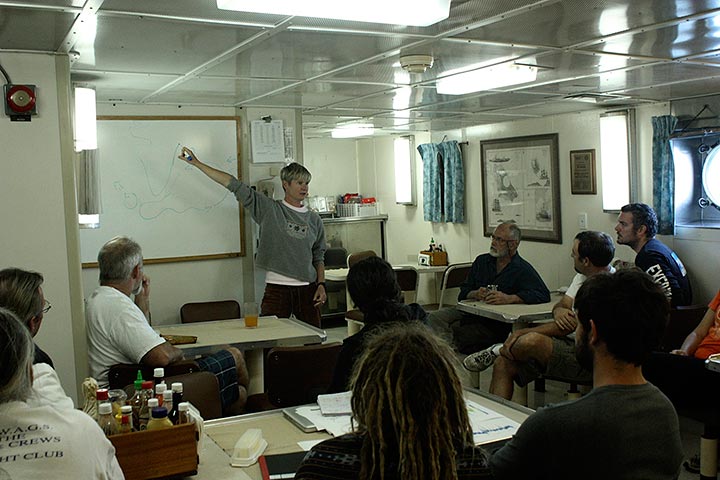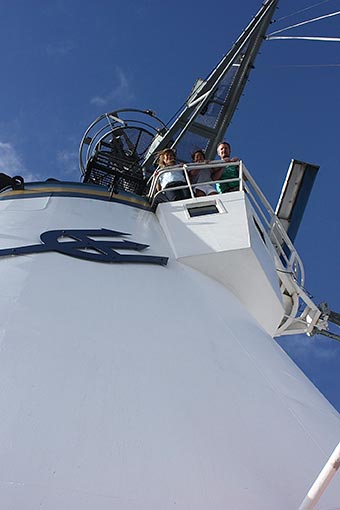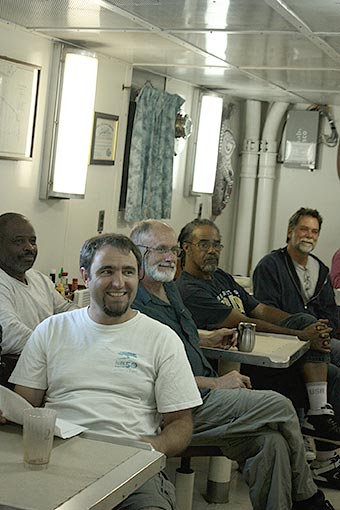
As we left it last time, Sverdrup and Ekman had explained ocean gyres, thus laying the intellectual foundation of a new science.
While Sverdrup’s theory accounted for the existence gyre, it left unexplained that shared oddity of all gyres we mentioned earlier. The currents on the west side of the gyre—such as the Gulf Stream and the Agulhas—flow fast and narrow, quite unlike the broad, sluggish currents on the east side. Why? Another way to phrase the question for our purposes: Why does the Agulhas Current exist? The answer had to wait another 40 years, for hands-down the greatest oceanographer who ever lived, Henry Stommel, working at the then-fledgling Woods Hole Oceanographic Institution.
The story goes that Stommel, who came to WHOI with little science background, none in oceanography, stopped at a coffee shop with an older scientist, Raymond Montgomery, en route to a professional conference. Stommel asked Montgomery for advice as to what he should work on. Well, said Montgomery, there is still that unanswered question of “western intensification.” Montgomery later wrote that Stommel flipped over the paper place mat, pulled out a pen, and solved the problem qualitatively in twenty minutes. That’s what geniuses do. Then he went home to prove it. In 1948, he published the milestone paper “The Western Intensification of Wind-Driven Ocean Currents.”
With a series of models, Stommel showed that when he allowed Coriolis to increase with latitude, as on Earth, the gyre became asymmetrical—with a strong current in the west. Earth rotates at different velocities depending on latitude, fastest—about 1,000 mph—at the equator, progressively slower at the higher latitudes. In this, the physics can get thorny, but suffice it to say that Coriolis is nonexistent at the equator, stronger in the mid-latitudes, and strongest at the poles. Stommel’s solution can also be explained in terms of torque, or vorticity: The trades and westerlies in the Southern Hemisphere produce a counterclockwise torque on the ocean, which must be balanced by a clockwise torque produced by a strong current at the western boundary.
So we can say, only slightly unscientifically, that if the current “gains” vorticity as it flows away from the equator, it must “lose” vorticity as it flows back toward the equator on the east side of the gyre. Now, putting together the concepts progressing from Ekman to Sverdrup to Stommel, we have an explanation not only for the existence of the gyre, but for its distinct characteristic—the Western Boundary Current.
As part of a memorial to Stommel, who died in 1993, WHOI oceanographer Joseph Pedlosky wrote this about the ’48 Paper: “Once the problem is viewed as a global structural problem in which the Gulf Stream is a limb of a strongly asymmetric circulation cell, the problem changes profoundly. The Gulf Stream is now part of the general circulation of the ocean and not a geographic curiosity.” For “Gulf Stream” we can substitute “Agulhas Current.”
And that’s the important point for us, not so much the physics itself, which can strain most graduate students to explain, but the fact that the gyre is asymmetrical with an intensified current in the west. The very fact that they’re intensified—stronger than the other related currents in the gyre—all gyres—makes them the heavy lifters in the transport of heat away from the equator toward the poles. And among them, the Agulhas in one the very heaviest lifters, as we’ll see.










